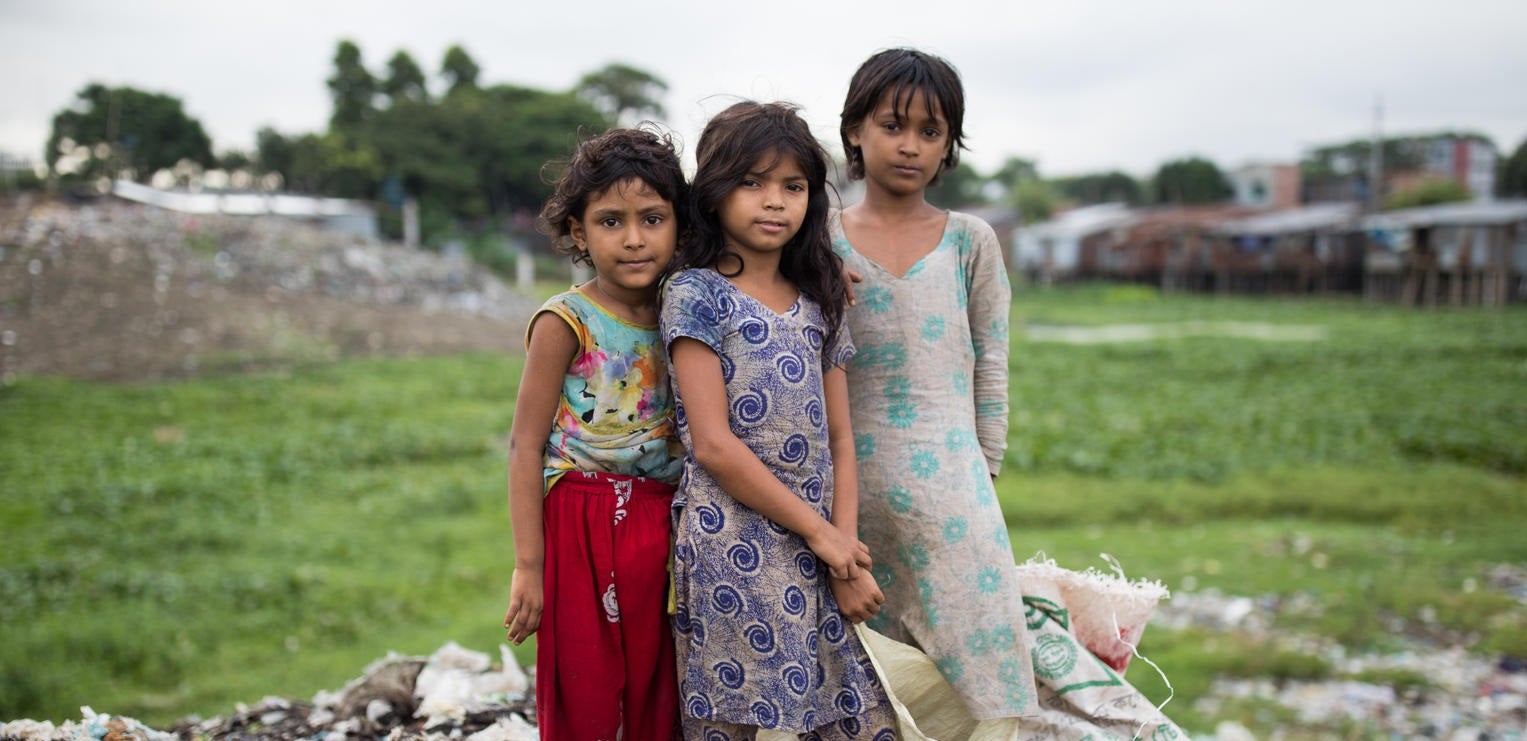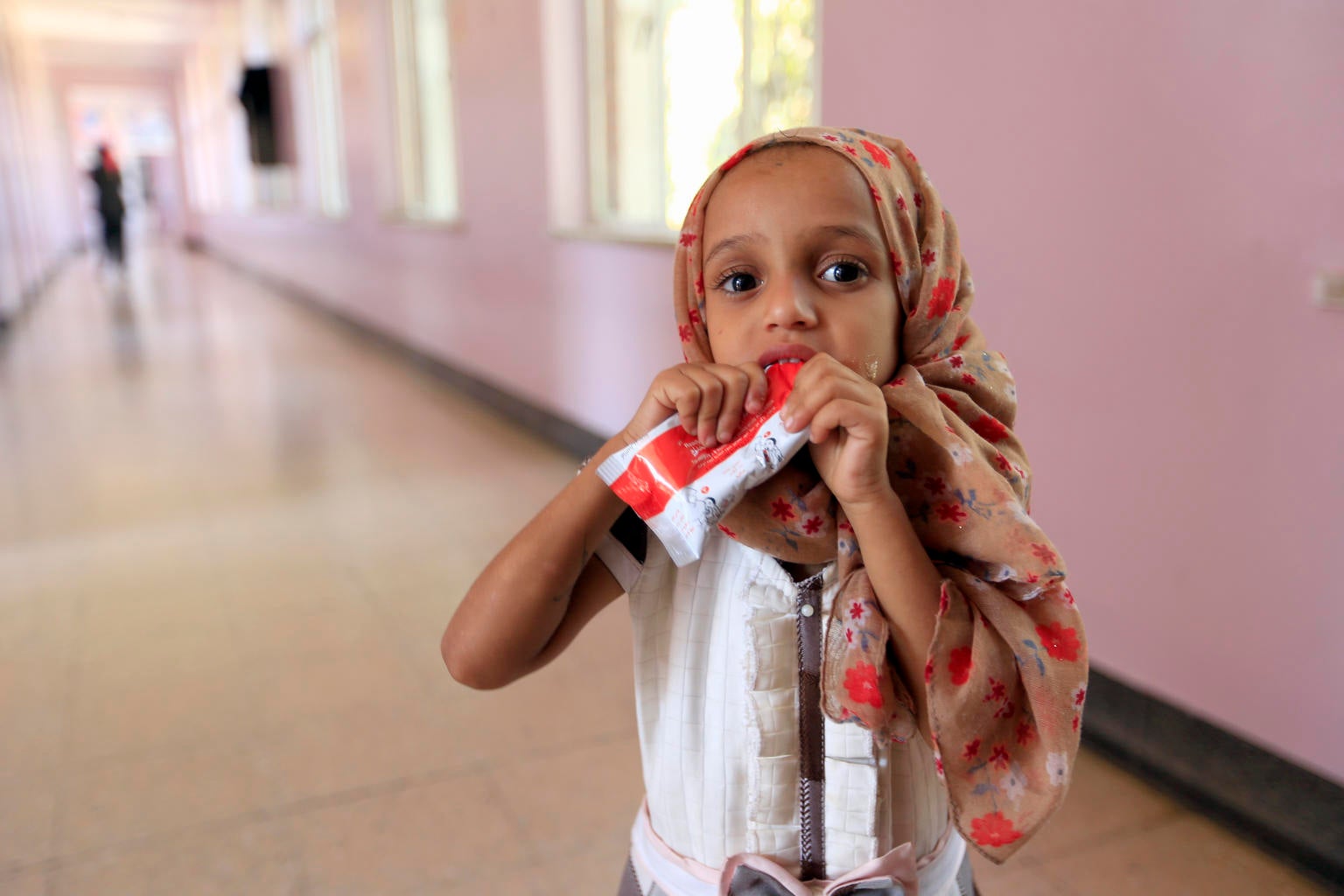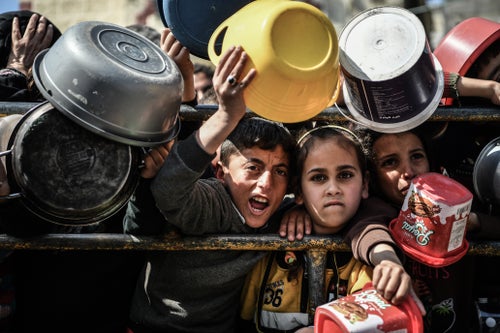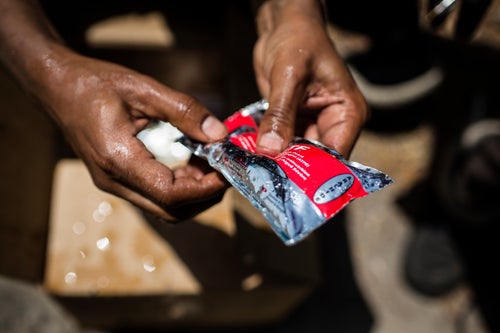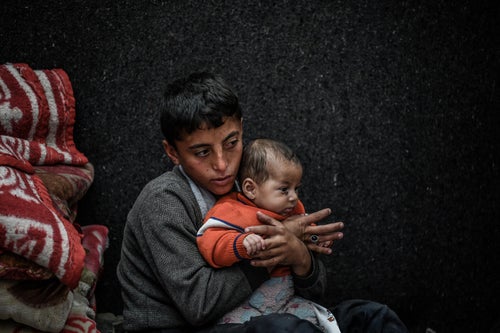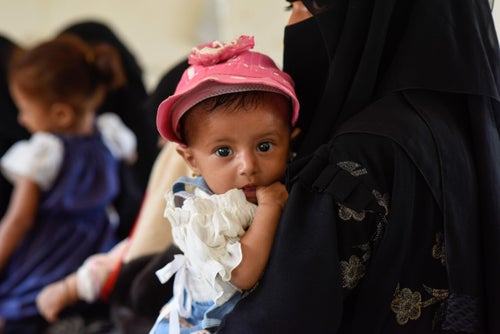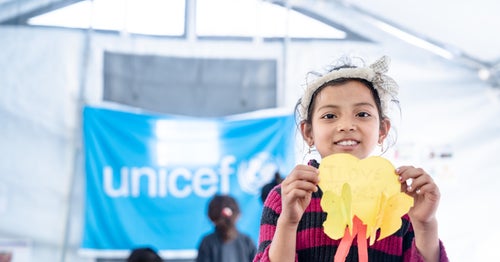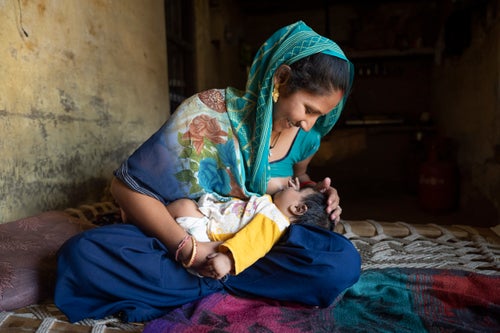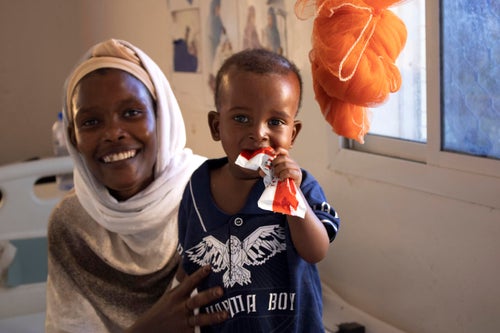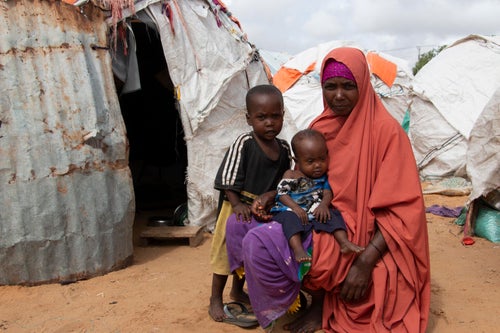Although it is rarely listed as the direct cause, malnutrition is estimated to contribute to more than one third of all child deaths globally. Yet, the world has more than enough food to go around.
Despite the struggles caused by drought and climate change, globally, farmers and food producers, from tiny local bakeries, to enormous multi-national companies, produce enough food to feed more than 1.5 times the world’s current population. That is about 10 billion people every single day.
Yet even before the COVID-19 pandemic, one in nine people, or around 820 million men, women and children, were either hungry or undernourished. 113 million of them, across 53 countries, were experiencing acute hunger.
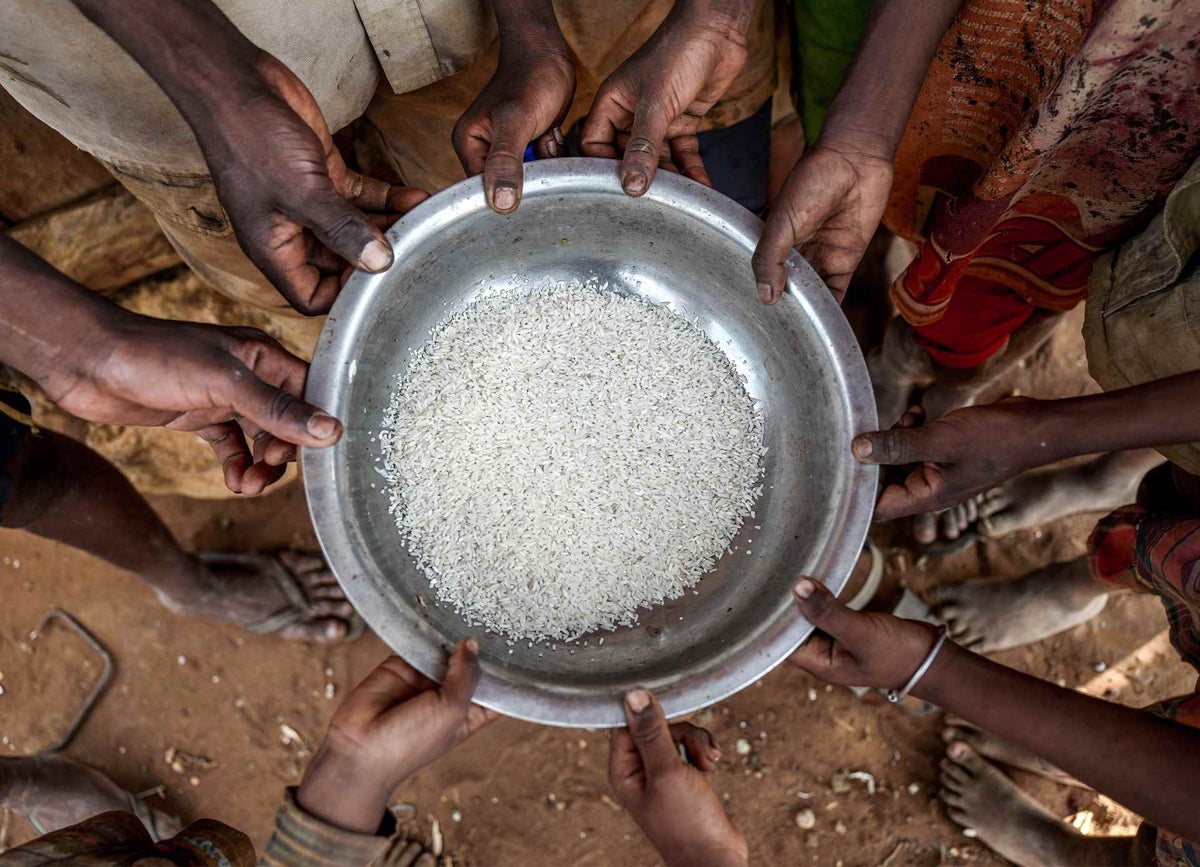
The problem is (primarily) poverty and inequality
Within national borders, including our own, striking inequalities exist according to location, age, gender, education and socio-economic levels of the community. There is a strong urban vs rural divide. The 2021 Global Nutrition Report reported that in children under five years of age, wasting rates could be up to nine times higher in certain communities within countries whilst stunting rates could be four times higher.
This is not because of a global, or national, lack of food but is instead because of inequality. Poverty means that many families simply cannot access or afford a healthy and balanced diet.
In the vast majority of countries in which we work, poor communities, especially those in rural areas, cannot simply head to the supermarket or market to stock up on a wide variety of fruits, vegetables and proteins. Fresh food is either not available at all or is prohibitively expensive.
This means that families turn to foods made from rice, wheat and corn, which fill bellies and give everyone the energy they need to make it through the day, but do not provide adequate nutrients. This can lead to micronutrient deficiencies and even obesity depending on the quantities available and consumed.

Conflict compounds the issue
Parents worldwide know just how difficult it is to get nutritious food on the table every night, but imagine how hard this is for those displaced by war or stuck in its midst and unable to flee.
In many cases, those displaced have had to leave the job that provides for their family, as well as abandon the crops, gardens, fruit trees and livestock that would have ensured variety and maybe even given them a little extra pocket money to buy the things they couldn’t produce.
At their destination, likely a refugee camp , or an urban centre, there are often limited services for a huge number of people. Water and food supplies are often scarce, as humanitarian organisations like UNICEF race to supply what is needed for those arriving. There is either no market or food prices have skyrocketed in response to the increasing demand caused by the influx of displaced people and refugees.
For families unable or unwilling to flee, supply often becomes an issue. Food is often no longer being transported into the conflict zone, either in attempt to starve out the so-called enemy or because logistically it is just not safe. Local farmers have usually fled alongside their community, meaning that those remaining have nothing to eat. In some cases, food supplies are managed by armed groups, who feed their members first and use food as a weapon or a means of control.
As a result of all of this upheaval, people are at higher risk of malnutrition and micronutrient deficiencies during war, with children and pregnant or breast-feeding women the most vulnerable.
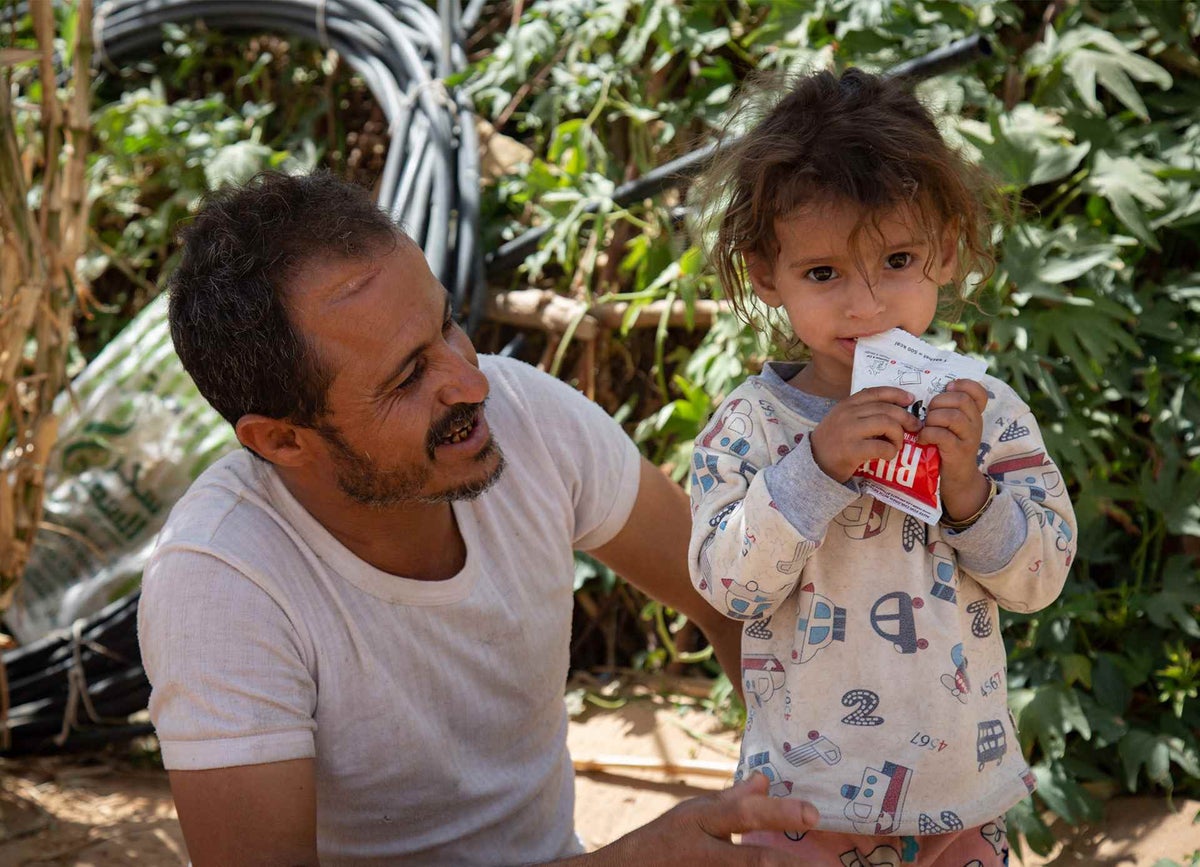
Yemen is a devastating example of the effect that conflict has on the nutritional status of a country. Up to one in five children in parts of Yemen are suffering from severe acute malnutrition which puts them at risk of death.
"We're tired, exhausted, of this situation and living conditions."
Mohammed (pictured above) fled fighting in Al Jawf, Yemen, and has two daughters who are currently being treated for malnutrition. Although he receives food aid, it is not enough.
“These five years of war have had severe effects on us,” Mohammed says. "We're tired, exhausted, of this situation and living conditions.
"If there was no war, we could have been in our homes now. I don't know how or when my daughters developed malnutrition, but this is most likely because of these difficult living conditions. We receive a monthly food basket, but it's barely enough.”
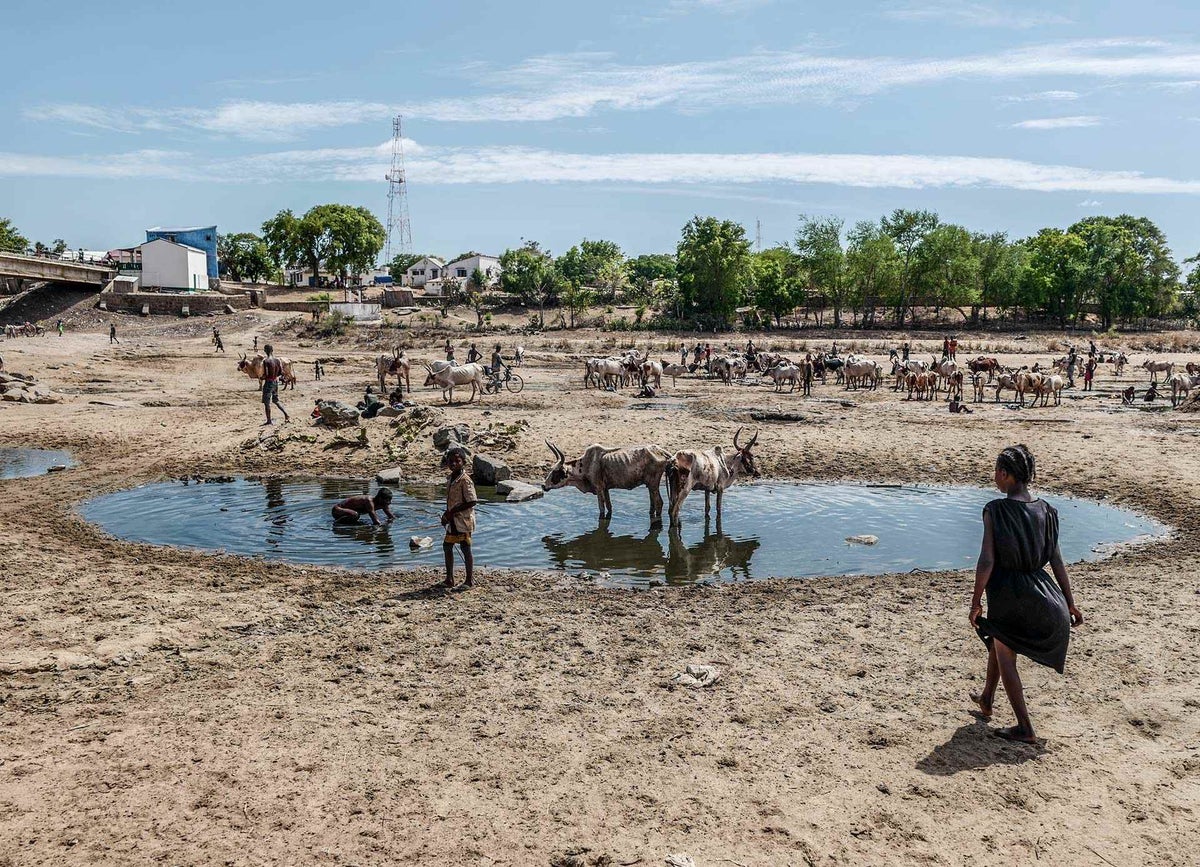
Climate change is making malnutrition worse
The countries that least contribute to climate change are the ones suffering the most from its effects. Soaring temperatures, droughts, floods, rainfall variability and intensity are leading to crop failures and rising food prices, which mean food insecurity and nutritional deprivations that can have lifelong impacts. They also risk provoking conflict and mass migration events which themselves can lead to malnutrition.
Worldwide, farmers rely on established weather patterns to plan their crops for the year and ensure they do not waste their investments in seeds or find themselves without food for their families. When the promised rainy season no longer comes, arrives at the wrong time or arrives in the form of a flood or cyclone, crops are destroyed, and families go hungry.
In Madagascar, one of the poorest countries in the world, nearly half of all children under the age of five are stunted (low height for age) because they aren’t getting the nutrients they need to grow.
Since 2014, the southern region of the country has been particularly hard-hit by decreased rainfall, taking a toll on crop production and leaving 1.1 million people food insecure in 2018, including nearly 500,000 children.
"We can’t grow rice or other crops as the land is dry and the rain is scarce here,"says Vola, a Malagasy mother of eight.
"We could not plant anything at all. The cassava leaves come from other people's plantations, but they fill our bellies and help us sleep."
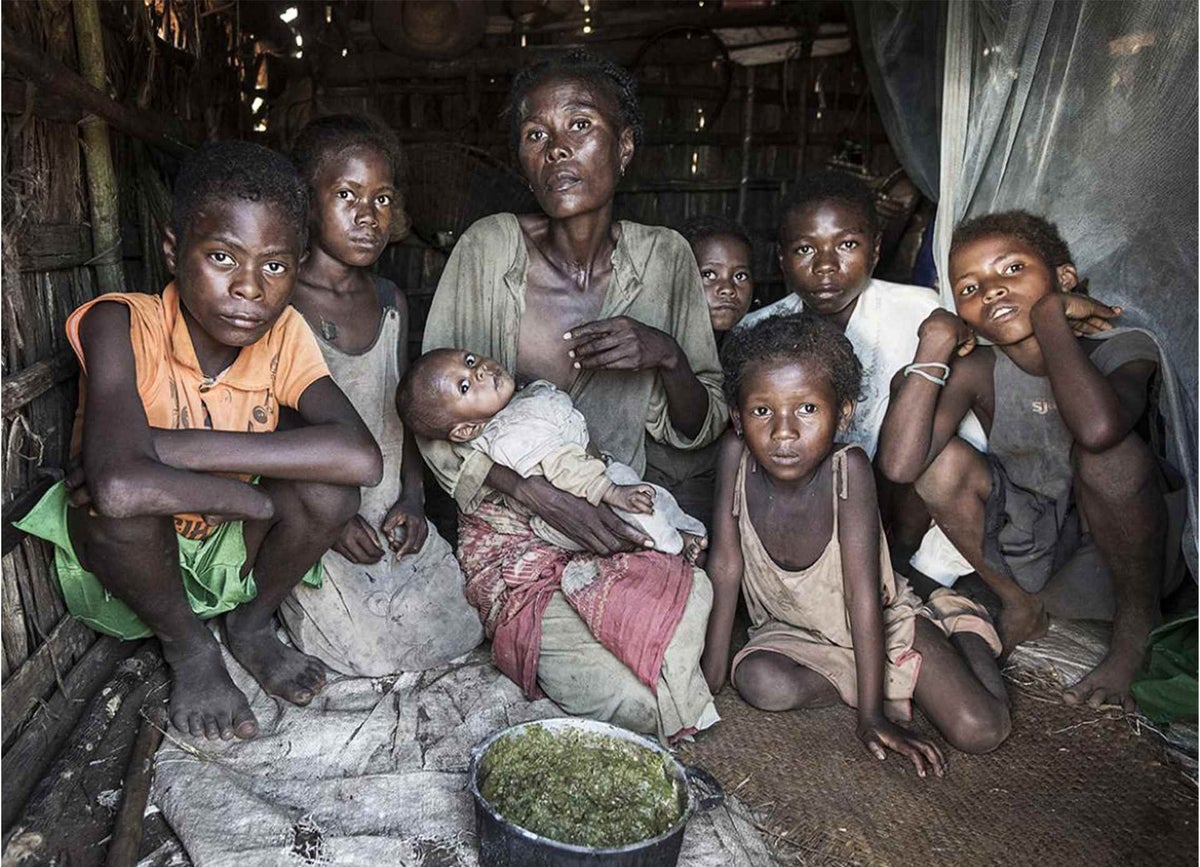
Mothers' nutrition is paramount
A mother’s poor health can also cause malnutrition in her children. Undernourished mums, who do not receive the right vitamins and minerals, or sufficient calories are not only at a far higher risk of obstructed labour but often deliver babies who are small for their gestational age and at a higher risk of neonatal death.
Those who survive are at risk of illness throughout their childhood, adolescence and into adulthood as they try to catch up. Extremely undernourished mothers are sometimes unable to produce enough breastmilk to feed their babies leaving those children at a further increased risk of stunting as well as of the long-term effects of childhood malnutrition.
What is UNICEF doing to help?
Nutrition is a key component in all of UNICEF’s programs – UNICEF is the largest supplier of therapeutic food in the world, buying an astounding 80 per cent of the world's emergency supplies. In both emergencies and development settings our teams help build the foundations of good nutrition as well as prevent and treat malnutrition in all its forms.
Providing life-saving treatment – UNICEF is the main supplier of ready-to-use therapeutic foods and works with partners to manage the urgent treatment of millions of children suffering from severe acute malnutrition every year. In-patient treatment is usually required for severe cases of malnutrition, but UNICEF is also working to assist health centres to deliver community-based treatment which reduces the need for long hospital stays for children who are not suffering from any other complications.
Delivering key micronutrients to vulnerable communities – UNICEF ensures that women and children have access to supplementation or fortified foods to address deficiencies of key elements including B12, folate, zinc, calcium, iron, magnesium, selenium and copper, as well as vitamins A, D, and E which are exacerbated in emergencies.
Supporting infant and young child feeding – UNICEF strongly encourages the initiation of breastfeeding within the first hour of a child’s life, exclusive breastfeeding for the first six months of life and continued breast feeding up until the age of two. We also support programs that provide counselling and information for mothers on breastfeeding and establish safe spaces for mothers to feed their babies. Once a child starts solids, we work hard with parents and caregivers to ensure they understand what constitutes a healthy and varied diet for their children. We also develop education materials to help with this education.
Conducting assessment, surveillance and monitoring – UNICEF support timely nutritional assessment across the world and helps set up and manage surveillance systems that monitor malnutrition rates and food security within the community. This not only serves to improve programme performance but can be an early warning sign for a deteriorating situation. UNICEF teams also work with local Ministries of Health to manage health facility data.
Developing norms and standards – UNICEF develops key guidelines to support emergency planning and response for governments, non-governmental organisations and other UN agencies.
Fostering resilience – UNICEF works with communities to plan for, withstand and bounce back from crises and enable local communities to be less dependent on outside interventions.
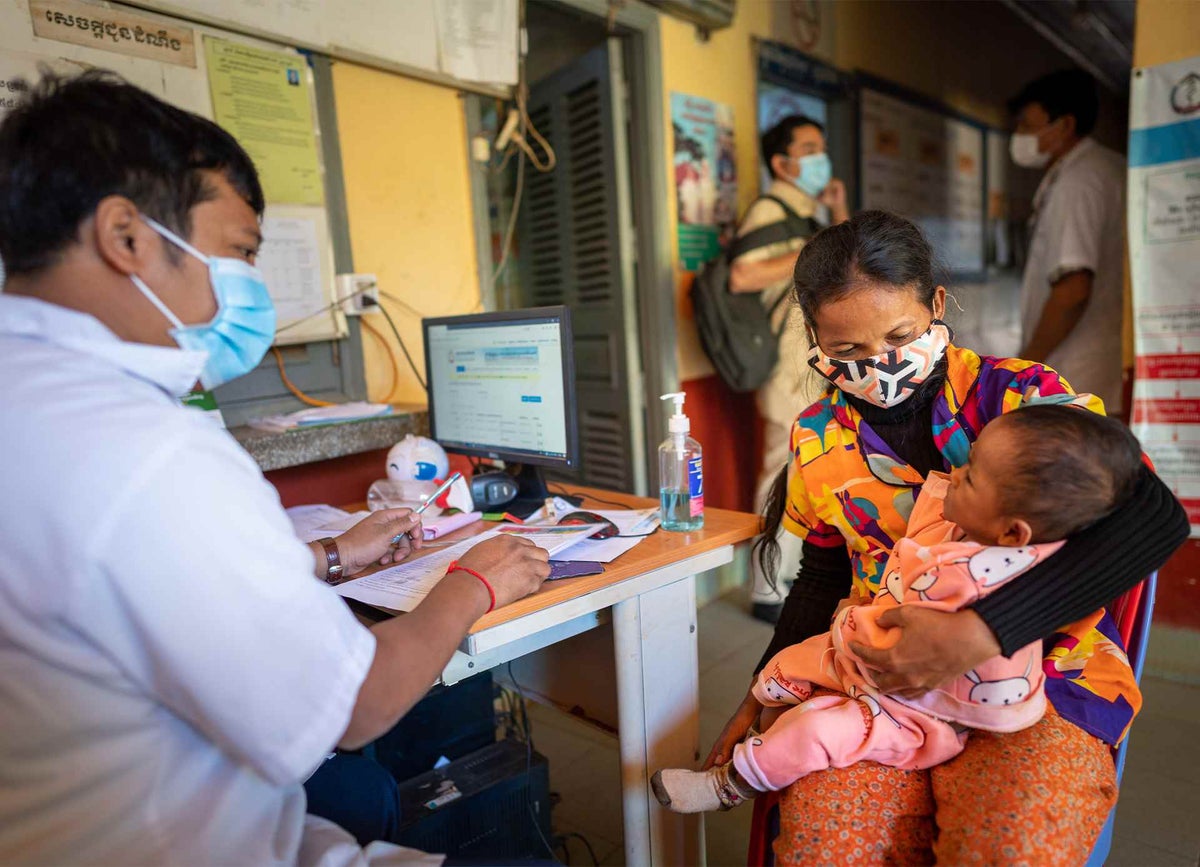
Related articles
Stay up-to-date on UNICEF's work in Australia and around the world


